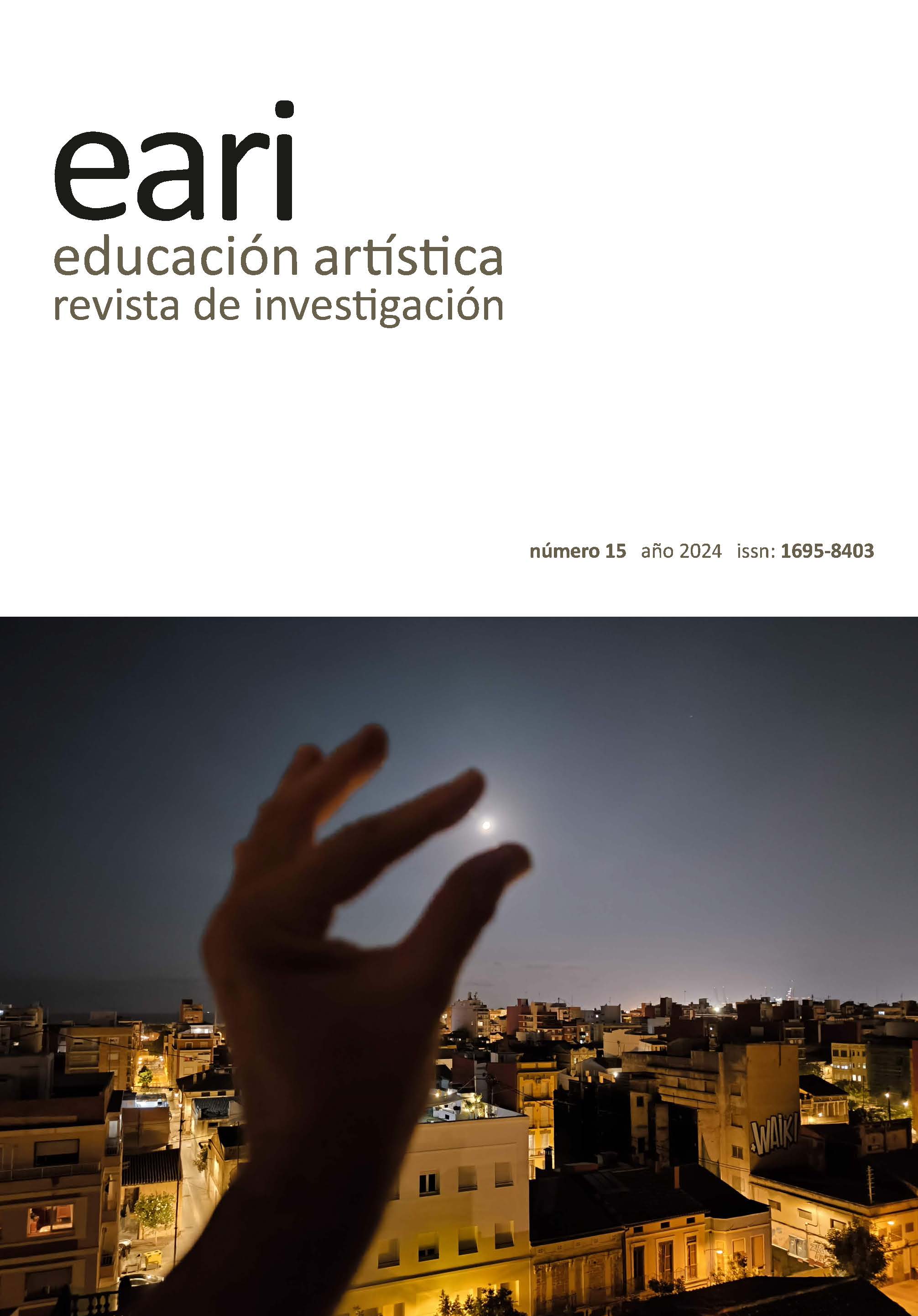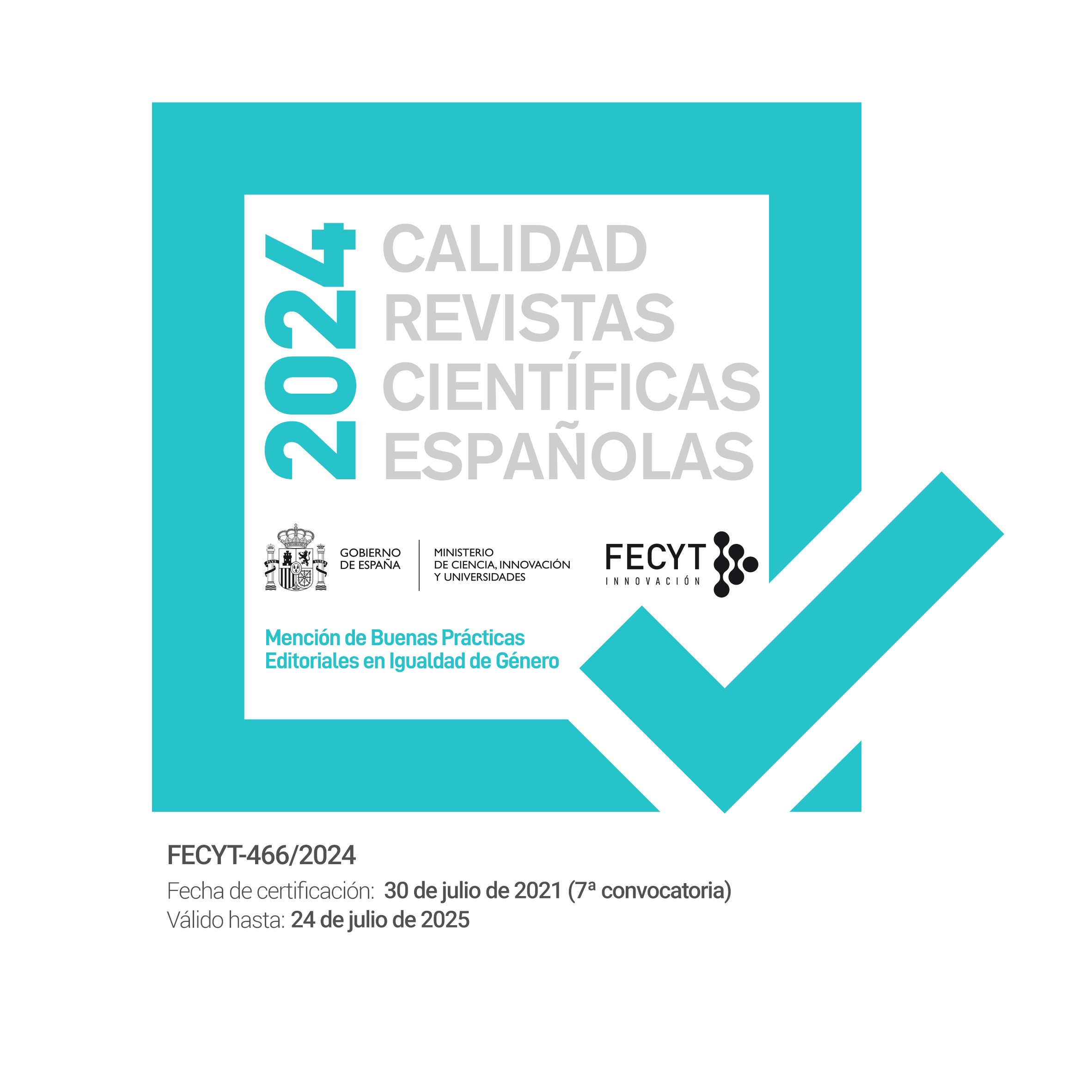Application of illustration and visual imagery of a classic literary work in art education
DOI:
https://doi.org/10.7203/eari.15.26598Keywords:
Divina comedia, ilustración, educación artística, literatura clásica, estudios clásicos, Abstract
Abstract
Illustrations of classic literary works can be considered an artistic subgenre with great influence in popular culture throughout history. Their use in art education allows for the exploration of new methods of education through art. This article deals with the application of artistic representations of Dante's work in art education implemented in graduate and undergraduate studies. It first presents a historical overview in illustration of the most significant artistic contributions of authors who interpret the songs of the Divine Comedy and then describes a practical activity with project-based learning methodology designed for graduate and undergraduate students that takes the Divine Comedy as a basis. In the activity, the work of classic illustrators who have represented it is reviewed and then the students create their drawings inspired by their imagination with excerpts from the text of the work. In this process, a natural approach to a classic work is achieved, working on specific parts of it.
The results of the experience confirm that with these projects students become familiar with the multiple cultural values of a work of universal classical literature. The approach is applicable to other literary classics, both culturally close (Blood Wedding, Don Quixote) and distant (The Odyssey, Nordic mythologies).
 Downloads
Downloads
 References
References
Bodleian Library MS. Holkham misc. 48. (s. f.). Digital Bodleian. Consultado el 2 de enero de 2023.https://digital.bodleian.ox.ac.uk/objects/10974934-30a5-4495-857e-255760e5c5ff/
Alighieri, D. y Casini, T. (1885). La vita nuova. Firenze: Sansoni Editore.
Asín, M. (1919). La escatología musulmana en la Divina Comedia. Madrid: Imprenta de Estanislao Maestre.
Barba, M. A. E. (2008). Arte y mito: Manual de iconografía clásica (Colección Arte). Silex Ediciones.
Bartlett, R. (2002). Panorama medieval. Barcelona: Blume.
Bindman, D. (2000). William Blake: The Complete Illuminated Books. London: Thames & Hudson.
Boccaccio, G. (1888). La vita di Dante. Firenze: Sansoni Editore.
The Divine Comedy. (s. f.). The Library of Congress. Consultado el 3 de enero de 2023. https://www.loc.gov/item/2021667870/
Braida, A. y Calè, L. (2007), Dante on View: The Reception of Dante in the Visual and Performing Arts, Farnham, Reino Unido: Ashgate Publishing.
Campos, A. (2017). Enfoques de enseñanza basados en el aprendizaje: ABP, ABPr, ABI y otros métodos basados en el aprendizaje. México: Ediciones de la U.
Crespo, A. (2003). Divina Comedia, Ilustrada por Miquel Barceló: Paraíso. Tomo II. Barcelona: Círculo de Lectores.
Crespo, A. (2003). Divina Comedia, Ilustrada por Miquel Barceló: Purgatorio. Tomo II. Barcelona: Círculo de Lectores.
Crespo, A. (2002). Divina Comedia, Ilustrada por Miquel Barceló: Infierno. Tomo I. Barcelona: Círculo de Lectores.
Caudet, F.; Llorens, Mª J.; y Domínguez, J. M. (2000). Ilustraciones de Gustave Doré: La Divina Comedia. Madrid: Edimat.
Divine Comedy Image Archive. (s. f.). Consultado el 24 de noviembre de 2022. https://rmc.library.cornell.edu/dvinecomedy/
Divine Comedy Digital (s. f.) Consultado el 23 de noviembre de 2022. https://divinecomedy.digital/#/
Doré, G. (2012). The Doré Illustrations for Dante's Divine Comedy. Chelmsford, MA: Courier Corporation.
Echeverría, A. (1995). Versión poética de Abilio Echeverría. Divina Comedia. Dante Alighieri. Madrid: Alianza Editorial.
Efland, A. (2002). Una historia de la educación del arte: Tendencias intelectuales y sociales en la enseñanza de las artes visuales. Barcelona: Paidós.
Fernández, S. (2022). La «Divina Comedia» a través del arte: un modelo de pervivencia en la memoria colectiva. Ala Este. Revista de Teoría de la Literatura y Literatura Comparada, 2, 73-92.
Gizzi, C. (2001). Giotto e Dante. Milano: Skira.
Gizzi, C. (2000). L´arte nuova e Dante. Milano: Skira.
Gizzi, C. (1999). Dante istoriato: Vent´anni di ricerca iconografica dantesca. Milano: Skira.
Grömling, A.; y Lingesleben, T. (2000). Grandes maestros del arte italiano: Botticelli. Neue Stalling, Oldenburg: Könemann Verlagsgesellschaft mbH.
Hamlyn, R.; Phillips, M.; Ackroyd, P.; y Butler, M. (2000). William Blake. London: Tate Publishing.
Kalaja, Paula & Dufva, Hannele & Alanen, Riikka. (2013). Experimenting with visual narratives. Narrative Research in Applied Linguistics. 105-131.
La Divina Commedia. (s. f.). Biblioteca Digital Hispánica. Consultado el 23 de noviembre de 2022. http://bdh-rd.bne.es/viewer.vm?id=12666
Owen, R. M. (2001). Illuminated Manuscripts of Dante’s Commedia (1330-1490) in Their Cultural and Artistic Context [Phd]. Royal Holloway, University of London.
Pyle, E. (2016). William Blake's Illustrations for Dante's Divine Comedy: A Study of the Engravings, Pencil Sketches and Watercolors. Kern, California: McFarland.
Räsänen, M. (2003). Interpreting Art Through Visual Narratives. In: Xanthoudaki, M., Tickle, L., Sekules, V. (eds) Researching Visual Arts Education in Museums and Galleries. Landscapes: The Arts, Aesthetics, and Education, vol 2. Springer, Dordrecht. https://doi.org/10.1007/978-94-010-0043-7_13
Rifà-Valls, M. (2011), Experimenting with Visual Storytelling in Students' Portfolios: Narratives of Visual Pedagogy for Pre-Service Teacher Education. International Journal of Art & Design Education, 30: 293-306. https://doi.org/10.1111/j.1476-8070.2011.01674.x
Società Dantesca Italiana (s.f.). Consultado el 23 de noviembre de 2022. https://www.dantesca.it/
The British Library. (2005). Details of an item from the British Library Catalogue of Illuminated Manuscripts: Egerton 943. https://www.bl.uk/catalogues/illuminatedmanuscripts/record.asp?MSID=6647
The Divine Comedy – Digital Dante. (s. f.). Consultado el 23 de noviembre de 2022. https://digitaldante.columbia.edu/dante/divine-comedy/
Tomlinson, C. (1894). Dante, beatrice, and the divine comedy. Williams and Norgate. London: Harvard University.
Waismann, A. (1970). De algunas constantes estilísticas en la Divina Comedia. Córdoba: Selbstverl.
Downloads
Published
How to Cite
-
Abstract91
-
PDF (Español)48
Issue
Section
License
![]()
Educación artística: revista de investigación (EARI) retains the proprietary rights (copyright) of published works, and favors and allows the reuse of the same under the license Creative Commons Attribution-Noncommercial Use 4.0 International License (CC-BY-NC 4.0), which allows third parties to use the published material whenever the authorship of the work and the source of publication is mentioned (journal, publisher and URL of the work), and it is used for non-commercial purposes.
Authors are encouraged to disseminate their work after it has been published, through the internet (for example, in institutional archives online or on its website) which can generate interesting exchanges and increase work appointments.








